Permissionless Pilots
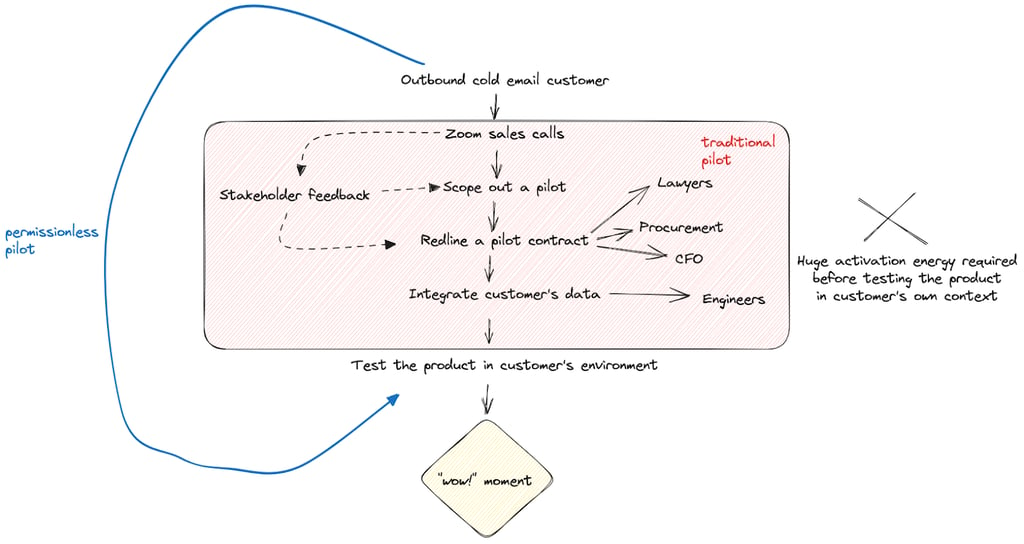

A version of this article originally appeared in TechCrunch here.
I’ve noticed a new pattern that’s enabling startups to close big contracts, fast. These founders and early employees are successfully inverting the entire traditional, notoriously slow enterprise sales cycle by shifting the customer’s “wow moment” from the end of the sales cycle to the very beginning. Let’s explore the world of “permissionless” pilots.
It’s generally accepted that the faster your product can deliver that “wow” feeling to customers, the better. But today far too many products take forever to deliver that moment. Enterprise sales happen through a long slog of sales calls, procurement, contract negotiation, and technical integration. Those all occur before a prospect can experience that wow moment and believe with confidence that a product will work for their use case. Candidly it’s a miracle any enterprise sales close at all.
The catch-22: “I’ll give you my data once I know it works on my data”
There’s a reason for this. Enterprise software products generally require your customer’s data to work. To get around this, some demos use fake dummy data to simulate a theoretical user experience. That’s like watching someone else drive a car at the dealership. It’s a lot more exciting to test drive it yourself.
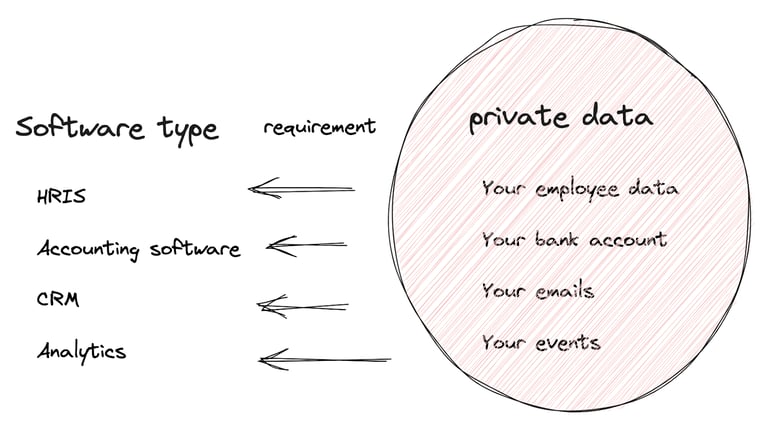

But most prospects don’t give away their employer’s data until they’re convinced it’ll be worth their while. Getting the green light to share or integrate company data with a 3rd party involves jumping through hoops. Prospects must spend social capital along the way, first to secure internal political support, then to navigate formal approvals.
On the other hand, rarely do customers really get to “wow!” before they’ve seen your product used in their own specific context, i.e. with their very own data. You’ve got yourself a catch-22.
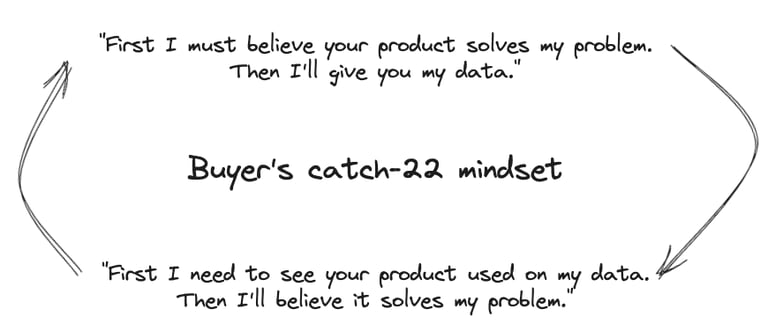

To break out of this vicious cycle, let’s instead imagine if your product could show a customer exactly what the experience would look and feel like when used on their own data, in their context, before they spent any time on sales calls, procurement, legal, integration, etc. That would change everything…
Enter the permissionless pilot
This is where the permissionless pilot comes in. It's a cheat code that sets the customer time-to-value to zero. It’s your tool to overcome customer skepticism, and to do so immediately.
With the permissionless pilot, you shift your prospect’s wow moment from the end of the sales process to the very beginning, to the same instant they first hear of your product. You don’t need them to agree or configure anything before the demo just works, hence “permissionless.”
So what is it? The permissionless pilot is a product demo that uses public, customer-specific data to instantly deliver the wow moment.
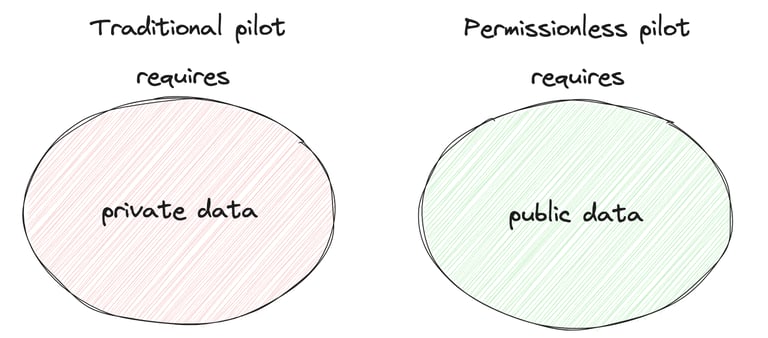

How to create a permissionless pilot
The three basic steps to a permissionless pilot are:
Get the public data
Build a tool for it
Drive demand to that tool
Not every company is a candidate for permissionless pilots, but the steady proliferation of public data in the last 10 years means there are certainly untapped opportunities for more wow moment demos. Recent advances in ML techniques like computer vision, and natural language processing with LLMs, also allow us to structure vast amounts of unstructured data, creating additional permissionless pilot opportunities.
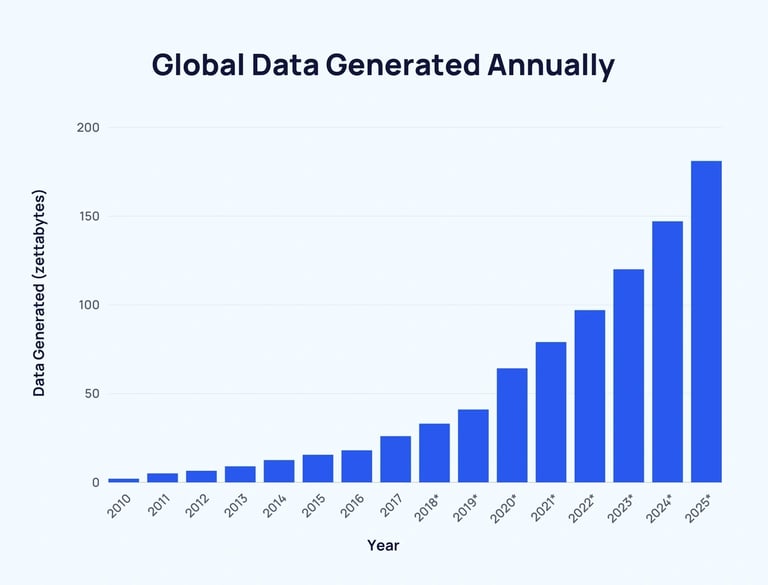

Source: Statistia via Exploding Topics
A real world example: how Emerge uses the permissionless pilot
Permissionless pilots aren’t just some hypothetical VC idea. They’re actually being used in the market to win big customers faster. Here’s one example from a portfolio company of ours that leverages a particularly clever type of public data: the binary code for every mobile app in the iOS and Android app stores.
For background, Emerge Tools is a mobile application performance management (APM) and optimization suite that among other things allows developers to make their mobile apps smaller. Shrinking their size makes apps take up less space on your phone, require less data and time to download, and load faster on start. In less than 3 years, the startup landed customers like DoorDash, Square, Airbnb, Duolingo, Dropbox, Classpass, Bumble, Faire, and other household names they can’t yet name publicly. All without sales reps.
Let’s understand how permissionless pilots helped them get there. While Emerge's full product indeed integrates with a mobile engineering group’s development process, that process can require buy-in from many stakeholders leading to a long sales cycle. To shorten the time-to-wow, the team built a system to provide instant analysis demos for any prospect by reverse engineering the publicly available version of any native mobile app. This allowed Emerge to show mobile teams their product’s value by simply looking up their app by name (no integration required). Here’s an example showing the latest TurboTax iOS app. Emerge’s automated insights found savings that would help reduce the size of their app by over 40%. Note that at no point in generating the TurboTax public demo did Intuit, the $136 billion behemoth owner of TurboTax, have to hand over data, redline contracts, or build internal political support for considering a new vendor.
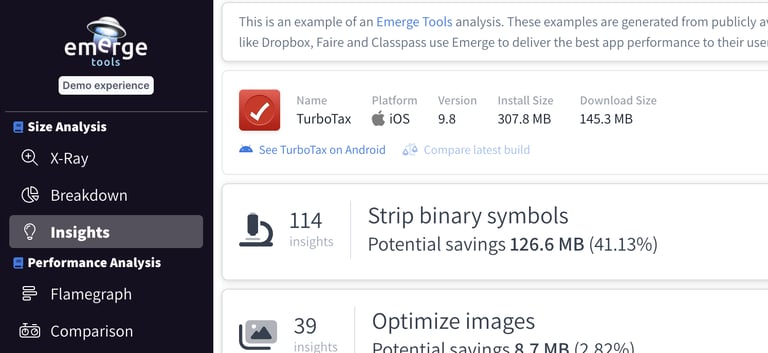

At the beginning of 2023, Emerge started regularly automating their analysis of apps, creating pages for each. They went from analyzing around 500 apps at the beginning of the year to now analyzing over 10,000 public apps on a regular cadence.
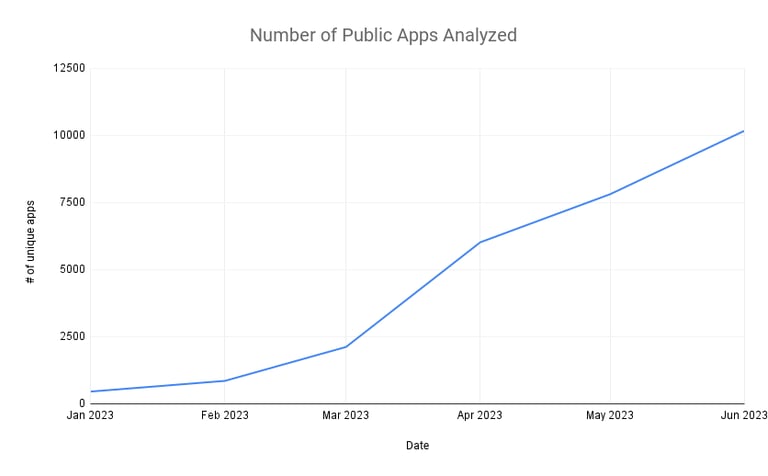

Today Emerge analyzes thousands of mobile apps per week. They use the app analyses to build original content (blog, deep-dives, tweet threads). That content gets engagement. Because each app analysis lives on a unique, public URL, these mini-pilots become artifacts that prospects can’t help themselves from checking out, and often sharing internally over Slack with colleagues. Since the beginning of the year, this engagement led to a 400% increase in Twitter followers, organic search clicks, and impressions.
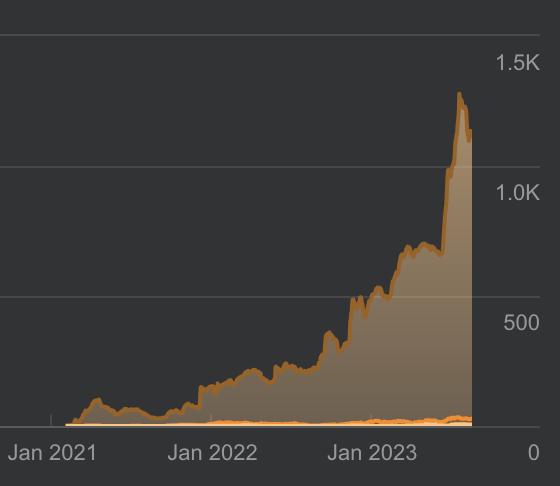

Organic Keyword Growth over time
The big contracts followed, not because of a short-lived gimmick, but because the customer persona – mobile developers – could quickly examine specific insights related to their very own app, and proceed to implement the recommendations right away. For most devs, that experience just beats talking to a salesperson.
Where else could permissionless pilots work?
Brainstorming time. The five quick-and-dirty examples below should merely get your own creative juices flowing. The hundreds of startups out there that could benefit from permissionless pilots will know their own data sources and use cases far better than I can guess off the top of my head. I’m just giving you the framework.
From Github open source repos to rental listings, Youtube videos, and job postings: the world is your oyster.
To help with idea generation, start by just writing down all the public data sources relevant to your product or industry that you can think of. Next ask yourself: “What could my product do assuming it never got any proprietary customer data, but could ingest all those public data sources?” In terms of your answer, you’re aiming for a demo that does “something cool.” I’m not sure why, but “cool” is the adjective that tends to come to mind for the builders when they picture it. It doesn’t have to be perfect. It doesn’t have to be something customers would pay for. For good permissionless pilots, “something cool” is a good start.
If it’s not already obvious, it’s worth mentioning here in closing: permissionless pilots can be a powerful tool. Deploy your pilots in a way that builds up your brand, not in a way that destroys it. Think about what tone you want to strike with prospects, how you want them to feel when they see the pilot. Good luck out there!